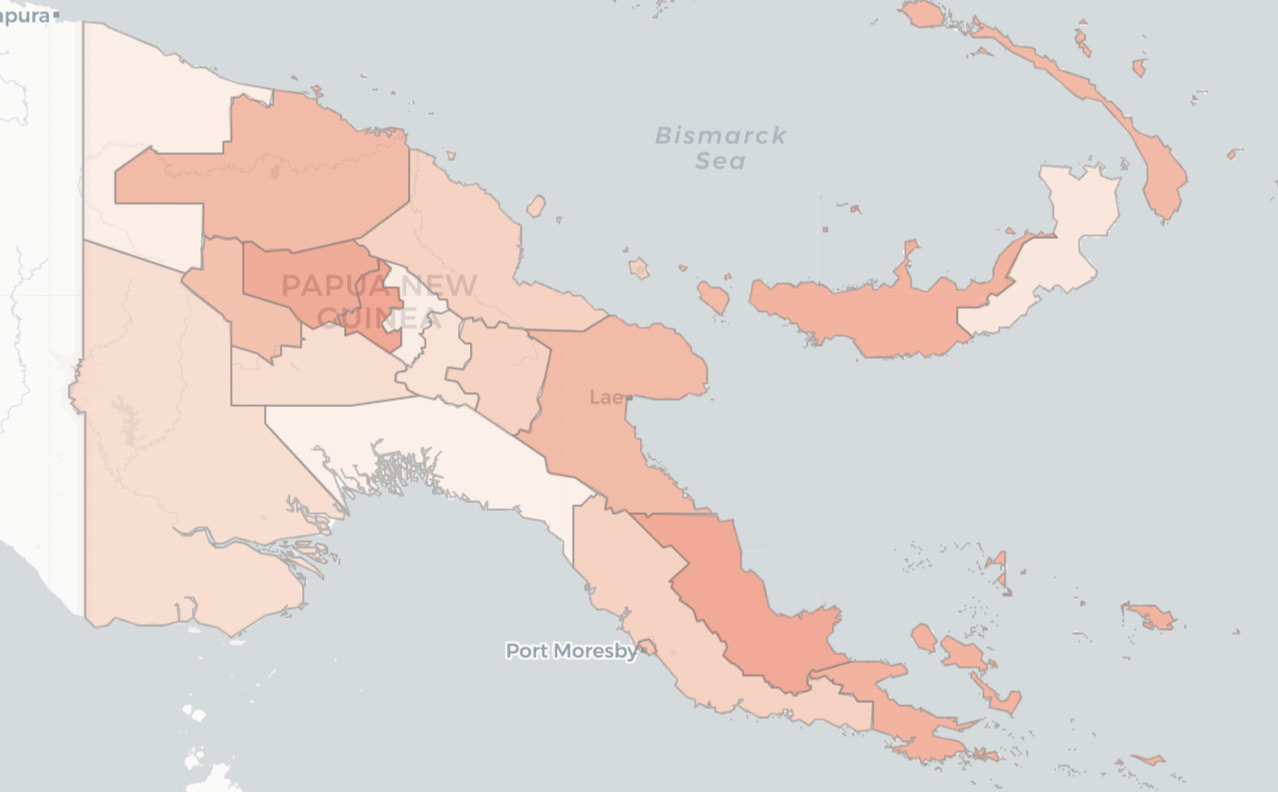In Friday’s blog post, I looked at the number of candidates running per seat in Papua New Guinea elections. Specifically how the number of candidates is very high, with over 30 candidates on average running in each seat at this election, and at the last two.
Today I wanted to look at what share of the vote winning candidates receive. With large ballot papers, most MPs are elected with a minority of the vote, often quite a small minority.
PNG used a form of preferential voting prior to independence, but switched to first-past-the-post for the first post-independence election in 1977. They then switched to Limited Preferential Voting (LPV) for the 2007 election.
LPV requires voters to number exactly three preferences – no more and no less. This does mean that preferences do flow to a certain extent, sometimes electing a candidate who wasn’t leading on primary votes, and winning candidates do get a greater share of the vote, but with large ballot papers three preferences only go so far.
Let’s start by looking at the historic trend.
Winning candidates tended to poll about 35% on average in 1977, and this dropped to about 20% in 1997 and 2002. The vote share after distribution of preferences has brought winning candidates back to roughly the levels they achieved in 1977 under first past the post, and the first preference share for winners has also climbed slightly, but is still well below a quarter of the total vote.
In 2017, eleven seats were won by a candidate with under 10% of the primary vote. Sekie Agisa in South Fly polled 6.1%, and won with 17.5% after preferences. That was in a field of 52 candidates.
Only five candidates polled a majority of the primary vote. The second-highest primary vote was for Sam Basil, who polled 58.5% in Bulolo, in a field of 27. The highest primary vote was for then-prime minister Peter O'Neill, who polled 77.3% in Ialibu Pangia, in a field of eleven candidates.
There are no other seats where the candidate achieved a majority after preferences, although it appears in some seats where the leading candidate polled in the high 40s there was no preference count recorded. In 27 seats, the winner achieved 40% or more after preferences. The median winner's final vote share was 31.3%.
Sekia Agisa in South Fly also had the record for the lowest winning vote share after preferences, with 17.5%. 20 MPs were elected with less than 25% of the vote after preferences.
In 2017, 83 out of 111 seats were won by the candidate leading on primary votes. The second-placed candidate won in 22 seats, the third-placed candidate won in four, and the fourth-placed candidate won in two.
Those fourth-placed candidates were Jonny Annanias Alonk in Middle Ramu and Wesram Wesley Ora Raminai in Kagua Erave. Raminai polled 8.2% of the primary vote and 30.1% after preferences. Alonk polled 6.7% of the primary vote and won with 22.7% after preferences. Interestingly, Alonk's main rival at the end of the distribution had come seventh on primary votes!
Next up, I've mapped out the share of the vote for the winner by electorate. Bear in mind the PNG Elections Database has no 2017 final vote share for Henganofi.
Ialibu Pangia, the seat of Peter O'Neill, stands out very strongly. Apart from that, it does appear that western parts of the Highlands tended to have a higher vote share for the winner than eastern parts, and the Islands generally had higher vote shares. Winners tended to have slightly higher vote shares in provincial seats.
These trends are consistent with areas that have fewer candidates in 2022, which made me wonder: did they also have fewer candidates in 2017, and is there a relationship between the size of the ballot and the winner's vote share? You'd expect there to be some relationship, since a smaller ballot leaves fewer candidates to receive votes.
And what do you know, there is, and it's quite strong.
There is a similar trend for the winner's share of first preferences, but it's even stronger after preference distribution.
That's it for today. Coming up in tomorrow's final chapter: what does this fragmented many-candidate voting system mean for the an MP's chance of re-election?



